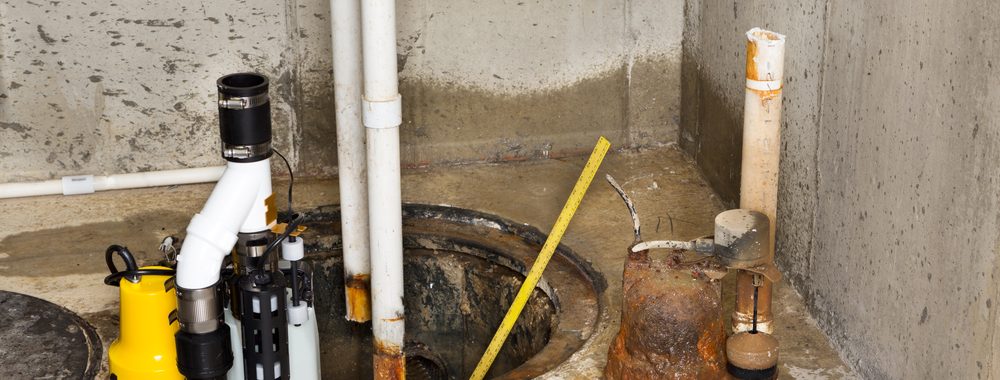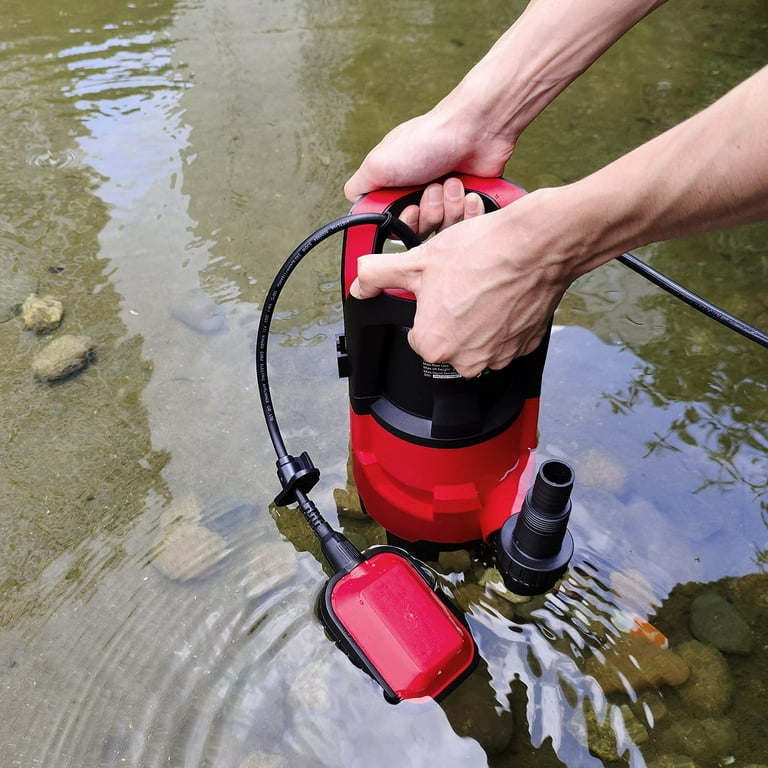Rapid Solutions for Taking Care of a Sump Pump
Rapid Solutions for Taking Care of a Sump Pump
Blog Article
Any individual seems to have their private piece of advice involving Keep Your Sump Pump Clean, It'll Keep You Dry.

Sump pumps are critical components in many homes, especially in locations vulnerable to flooding or too much wetness. They aid stop water damages by efficiently removing excess water from cellars or crawl spaces. However, like any other device, sump pumps need normal maintenance to ensure they function effectively when needed one of the most. Cleansing your sump pump is an important part of its upkeep, and comprehending exactly how to do it effectively can conserve you from costly repairs and possible disasters.
Intro
Maintaining a tidy sump pump is essential for its correct functioning and durability. Neglecting this essential task can result in blockages, malfunctions, and inevitably, water damages to your residential property. For that reason, finding out exactly how to cleanse a sump pump is important for house owners that rely on these tools to maintain their basements completely dry and protected.
Signs of a Dirty Sump Pump
Knowing when your sump pump needs cleansing is essential for avoiding potential malfunctions. Some usual indications that indicate an unclean sump pump include strange sounds throughout operation, decreased water circulation, and visible debris in the pit. If you notice any of these signs, it's important to cleanse your sump pump immediately to avoid any kind of further issues.
Preparing for Cleansing
Before you start cleaning your sump pump, it's important to take some security precautions. Start by shutting down the power to the pump to stay clear of any kind of electrical crashes. Furthermore, put on proper safety equipment, such as handwear covers and safety glasses, to protect on your own from dirt, debris, and possible pathogens.
Comprehending the Sump Pump
Prior to diving into the cleaning procedure, it's important to have a basic understanding of how a sump pump functions. Generally installed in a pit or basin below the cellar flooring, a sump pump consists of a number of key components, including a pump, a float button, and a discharge pipe. When water collects in the pit, the float button triggers the pump, which after that pumps the water out through the discharge pipeline, away from the structure's structure.
Detailed Overview to Cleansing a Sump Pump
Turning off the Power
Begin by separating the power supply to the sump pump to avoid any kind of accidents while cleansing.
Checking for Correct Performance
Prior to re-installing the pump, carry out a fast test to guarantee that the float button triggers the pump correctly. Put some water into the sump pit and observe the pump's procedure. If whatever is operating appropriately, you can rebuild the pump and reconnect the power supply.
Eliminating Particles and Dust
Use a container or an inside story to get rid of any visible particles, dirt, or sediment from the sump pit. Dispose of the debris properly to stop it from clogging the pump or the discharge pipeline.
Cleaning the Pump and Float Switch Over
When the pit is clear of particles, carefully eliminate the pump from the pit. Evaluate the pump and the float button for any type of signs of damages or wear. Make use of a soft brush or fabric to clean the surfaces and get rid of any kind of gathered crud.
Purging the System
After cleaning the pump and float button, flush the sump pit with tidy water to remove any type of continuing to be dust or debris. This will certainly aid ensure that the pump operates smoothly and effectively.
Upkeep Tips to Keep Your Sump Pump Clean
Along with routine cleaning, there are several upkeep suggestions you can comply with to keep your sump pump in optimum condition:
Final thought
Cleaning your sump pump is a vital element of its upkeep and makes certain that it runs efficiently when you need it the most. By adhering to the actions detailed in this overview and including regular upkeep right into your routine, you can expand the life expectancy of your sump pump and shield your home from water damages.
6 STEPS ON HOW TO CLEAN A SUMP PUMP PROPERLY
UNDERSTANDING SUMP PUMPS
Your sump pump plays a crucial role in protecting your home by managing and removing excess water. It primarily functions as a “shield”, guarding your basement against the damaging effects of water accumulation. The pump is housed in a sump pit in the lowest part of your basement, and its job is to pump out any water that collects there.
During heavy rainfalls or when snow melts rapidly, water can infiltrate your basement, posing potential risks like flooding, structural damage, and harmful mold growth. Here, the sump pump springs into action, pumping out the intruding water and directing it away from your home.
SAFETY FIRST
Before cleaning, remember to prioritize safety. Disconnect the sump pump from the power source to prevent any accidental electric shocks. Also, wear sturdy gloves to protect your hands from any sharp or dirty components within the pump.
REMOVE THE SUMP PUMP
After ensuring your safety, the next step is to remove the sump pump from its pit. Doing this might require careful maneuvering as you don’t want to damage any pump components. Once removed, clean the sump pit to remove any accumulated debris or sludge.
INSPECT THE PUMP
Inspect the pump for any visible signs of wear or damage. Check the power cord, float switch, and impeller housing. If any components look worn out or damaged, consider replacing them to ensure optimal performance.
CLEAN THE PUMP
Thoroughly clean the pump with warm, soapy water. Make sure to rid it of any dirt, gravel, or other debris that might impede its performance. You can use a toothbrush to clean the small, hard-to-reach parts of the pump.
REINSTALL THE SUMP PUMP
Reinstall the pump into the sump pit Make sure it’s positioned correctly to remove the water effectively Once it’s back in place, reconnect it to the power source TEST THE PUMP
Finally, pour some water into the pit to ensure the pump works correctly. It should start automatically and begin pumping out the water; if it doesn’t, check the power source and the positioning of the pump.
Remember, while cleaning your sump pump is an essential part of home maintenance, hiring a professional plumber for a thorough inspection and cleaning at least once a year is also important. This will ensure that your pump is in optimal condition, ready to protect your home from potential water damage.
BEST PRACTICES FOR CLEANING SUMP PUMP DISCHARGE PIPES
Regular Inspection: Regularly inspect your discharge pipes, especially during heavy rainfall or snowmelt periods. Look for any signs of blockage or damage. Early detection of problems can prevent serious issues down the line. Periodic Cleaning: Over time, sediment and debris can accumulate in the discharge pipes, impeding the flow of water. Regular cleaning helps keep the pipes clear and functioning efficiently. You can use a high-pressure water jet to effectively clean the pipes. Insulation During Winter: In colder climates, discharge pipes can freeze, blocking the outflow of water. Protect your discharge pipes from freezing temperatures by insulating them with foam pipe insulation. This will ensure the sump pump can continue to discharge water even in freezing conditions. Proper Positioning: The discharge pipe should be positioned to direct water away from your home’s foundation. Improper positioning can lead to water seeping back into the basement. Ensure the pipe is long enough and angled correctly. Installation of a Check Valve: A check valve prevents water from flowing back into your sump pit after the pump has pushed it out. Installing a check valve helps maintain the efficiency of your sump pump and reduces the risk of flooding. Minimize Pipe Turns: Every curve or turn in the discharge pipe can decrease the efficiency of water flow. By minimizing turns and bends in your discharge pipe, you can increase the efficiency of your sump pump. https://www.fullspeedplumbing.com/how-to-clean-a-sump-pump-properly9999/

Do you appreciate reading about Steps to Cleaning Your Sump Pump Properly? Make a comment down below. We'd be delighted to listen to your opinions about this blog posting. In hopes that you visit us again later on. For those who appreciated our blog post plz remember to pass it around. Thanks for your time. Don't forget to check up our blog back soon.
Call Today Report this page